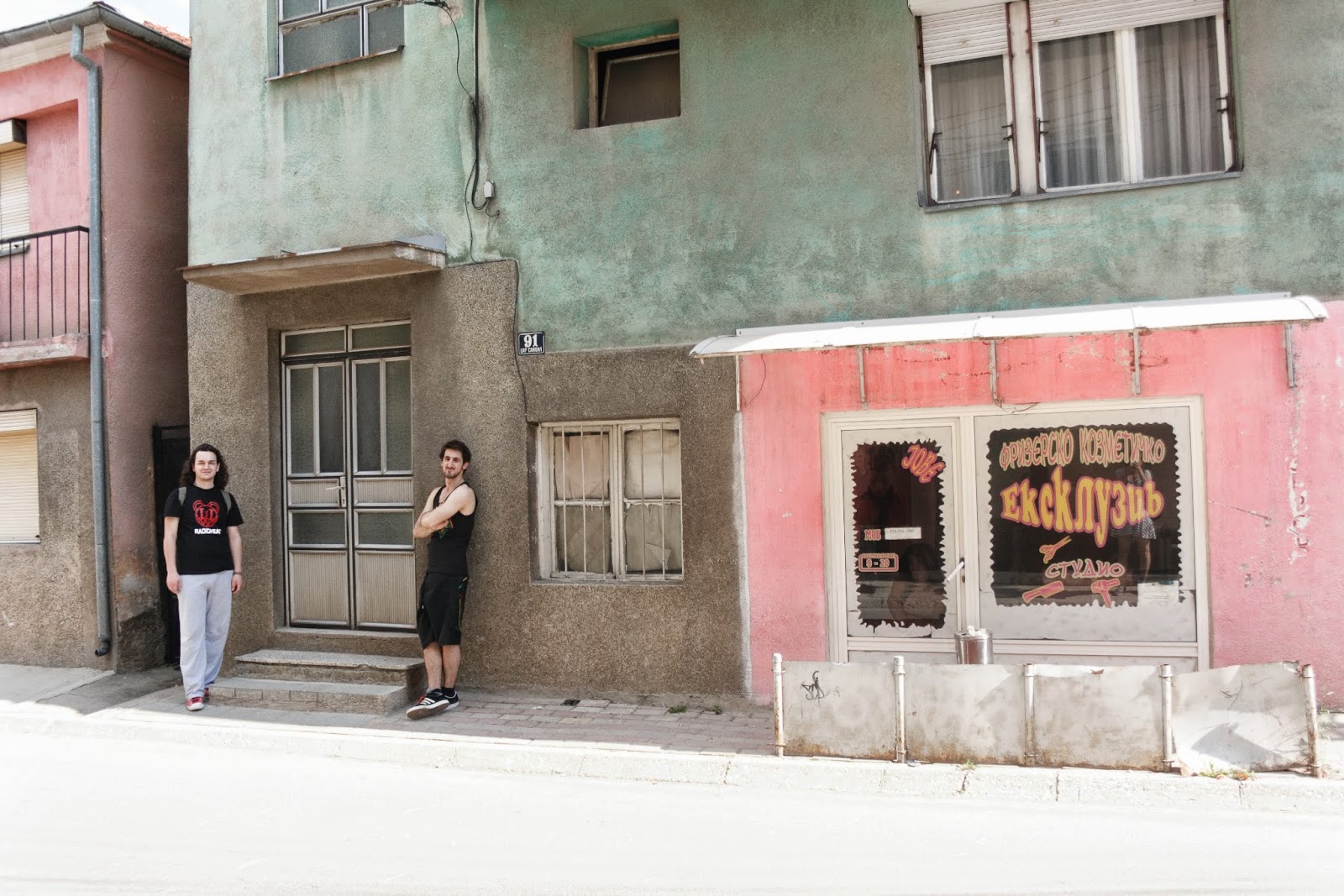Bitola. It's all about history here
Thanks to Youth in Action programme again, I came across an
old, historical, Macedonian city called Bitola. Situated in the S-W part of
Macedonia, Bitola settles at the foot of Baba Mountain and it is crossed by the
Dragon River. The place represents an
important junction between the Adriatic Sea, the Aegean Sea and Central Europe.
You would never guess, but this city has an impressive
history.
It was founded as
Heraclea Lyncestis (City of Hercules upon the Land of the Lynx) in the middle
of the 4th century BC by Philip II of Macedon and it was an important
settlement from the Hellenistic period until the early Middle Ages. Then, the
Romans conquered this part of Macedon in 148 BC and destroyed the political
power of the city. Still, the city remained prosperous because of the Via
Egnatia Roman road which passed by the city.
In the early Byzantine period (4th to 6th centuries AD)
Heraclea was an important episcopal centre and bishops like Bishop Evagrius of
Heraclea in the Acts of the Sardica Council of 343 AD were included. Soon after, in 472, the city was sacked by
Ostrogothic forces, commanded by Theodoric the Great and, despite a large gift
from the city's bishop, it was sacked again in 479. It was restored in the late
5th and early 6th centuries. In the late 6th century the city suffered
successive attacks by Slavic tribes and was gradually abandoned.
The name ‘Bitola’ comes from Slavic origins ‘obiteli’,
meaning ‘monastery’ , ‘cloisters’ , as the place was known for its monastery.
Late, after the Slavic meaning was no longer understood, the name of the place
lost the ‘o’ word and remained ‘biteli’ and Bitola (in other languages
inscriptions: ‘Bitolya’, Vitolia, Bitolj, etc.)
In the 10th century, Bitola was under the rule of the
Bulgarian Tsar Samuil, but the Byzantine emperor Basil II recaptured Monastiri
(Bitola) in 1015. The town is mentioned as an episcopal centre in 1019 in a
record by Basil II. Two important uprisings against Byzantine rule took place
in the Bitola area in 1040 and 1072. After the Bulgarian state was restored in
the late 11th century, Bitola was incorporated under the rule of Tsar Kaloyan
of Bulgaria. It was conquered again by Byzantium at the end of the 13th
century, but it became part of Serbia in the first half of the 14th century,
after the conquests of Stefan Dušan.
From 1382 to 1912, Manastır (now Bitola) was part of the
Ottoman Empire. Fierce battles took place near the city during the arrival of
Turkish forces. During the Ottoman rule the city was the last capital of
Ottoman Rumelia.
In 1874, Manastır became the center of Monastir Vilayet
which included the sanjaks of Debra, Serfidze, Elbasan, Manastır (Bitola),
Görice and towns of Kırcaova, Pirlepe, Florina, Kesriye and Grevena.
Becoming a strong trading centre, Bitola was also known as
"the city of the consuls". At one time during the Ottoman rule, it
had consulates from twelve countries. During the same period, there were a
number of prestigious schools in the city, including a military academy that,
among others, was attended by the famous Turkish reformer Kemal Atatürk. Bitola
was also the headquarters of many cultural organizations that were established
at that time.
During the Balkan War, According to the Treaty of Bucharest
in 1913, the region of Macedonia was divided in 3 parts among Greeks, Serbs and
Bulgarians. Bitola was to be in Bulgaria, according to a pre-war alliance
agreement between Bulgaria and Serbia. But the Serbian army entered the city
and refused to hand it to Bulgaria. During the First War World, Bitola was
divided into French, Russian, Italian and Serbian regions, under the command of
French general Maurice Sarrail. Until Bulgaria's surrender in late autumn 1918,
Bitola remained a front line city and was almost every day bombarded by
airplanes and battery and suffered almost total destruction.
After the end of World War I (1918) Bitola was included in
the Kingdom of Serbs, Croats and Slovenes, later called the Kingdom of
Yugoslavia. The city became a neglected border town, just 14 km from Greece.
The Serbian Government prohibited the speaking of Greek language in Bitola and
a numerous population of Greek people (8 000) left the city gradually, to move
to the Greek Macedonia.
During World War II (1941–1945), the Germans and later
Bulgarians took control of the city. But in September 1944, Bulgaria switched
sides in the war and withdrew from Yugoslavia, and Bitola was freed by
Macedonian pro-Titoist Partisans. On 4 November, the 7th Macedonian Liberation
Brigade entered Bitola victoriously. After the end of the war, a Macedonian
state was established for the first time in modern history, within Yugoslavia.
This had cost about 25,000 human lives. In 1945, the first Gymnasium (named
"Josip Broz Tito") to use the Macedonian language, was opened in
Bitola. (Wikipedia)
The area also has prehistoric remaining’s, near the village
of Porodin. From the Copper Age there are the settlements of Tumba near the
village of Crnobuki, Šuplevec near the village of Suvodol, and Visok Rid near
the village of Bukri. The Bronze Age is represented by the settlements of Tumba
near the village of Kanino and the settlement with the same name near the village
of Karamani (Wikipedia)
There is so much history in Bitola, I cannot share here with
you in one single post. Please do visit the city and its beautiful architecture
(prehistoric, Roman, Byzantine, Slavic, Ottoman, Macedonian, etc.).
For accommodation, I recommend maybe one of the hotels
situated in the mountain villages around Bitola – the view is amazing, with 20
euro per night you can find peace, clean air to breath and a natural
environment all around.




















































Comments
Post a Comment